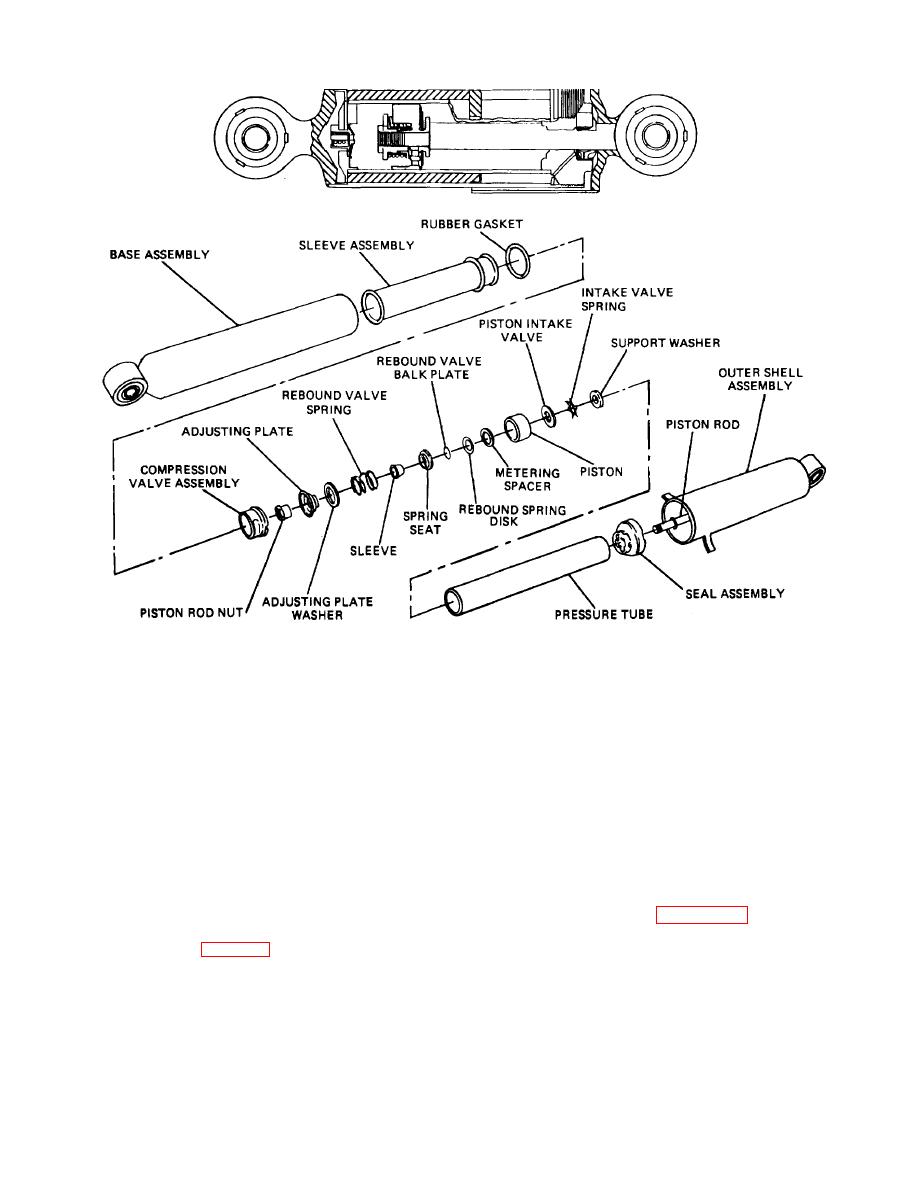
| Tweet |

Custom Search
|
|

|
||
 TM 9-8000
Figure 30-23. Direct-Acting Shock Absorber.
As the piston moves out of the cylinder, oil is drawn into
both sides of the eye to prevent metal-to-metal contact
the lower chamber from the reservoir through the
with the mounting stud or bolt. Direct-acting shock
reservoir check valve. An outer metal cover protects the
absorbers require no care and attention and are not
shock absorber from damage by stones that may be
repairable.
kicked up by the wheels. Rubber bushings are fitted on
Section VII. AUXILIARY UNITS
one axle to the other (or the tendency of one axle to dig
in more than the other), and help to avoid uneven tire
applied, there is a tendency for the entire axle and spring
wear and Jumping axle when brakes are applied.
assembly to rotate. To prevent this, strengthening arms
are added to the axles. These are known as torque
30-20. Swaybars. A vehicle tends to roll outward when
arms, torque rods, and torque tubes. The function of
these three is the same, the major difference being that
turning, particularly at high speeds. To prevent this roll,
the torque tubes connect with the power train, whereas
swaybars or stabilizers (fig. 30-9) are used. The
the other two connect with the frame of the vehicle.
swaybar consists of a bar of alloy steel mounted across
Parallel torque arms (fig. 30-6), used between axles in
the chassis and secured to the frame through rubber
bogie suspensions, ensure correct spacing and
bushings with arms on each end connected to the axle or
alinement of the axles, prevent transfer of weight from
TA233813
30-16
|
||
 |
||